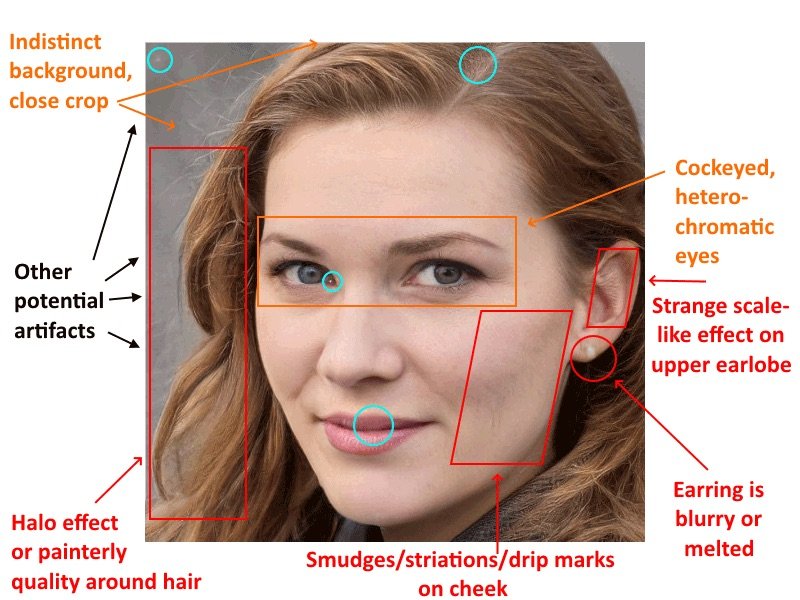An unknown “spy” used an AI-generated face to connect with targets over LinkedIn, the Associated Press reported.
According to the outlet, before the profile of Katie Jones was removed, it said she was a Russia and Eurasia fellow at the Center for Strategic and International Studies. She had a network from experts from various think-tanks such as the Brookings Institution and the Heritage Foundation.
“She was connected to a deputy assistant secretary of state, a senior aide to a senator and the economist Paul Winfree, who is being considered for a seat on the Federal Reserve.”
The AP determined that Katie Jones’ profile was a fake and part of a “vast army of phantom profiles lurking on the professional networking site LinkedIn.”
This claim is substituted by interviews with several experts, who said the profile picture was created by computer software.
“I’m convinced that it’s a fake face,” said Mario Klingemann, a German artist who has been experimenting for years with artificially generated portraits and says he has reviewed tens of thousands of such images. “It has all the hallmarks.”
According to those same cited experts, this was no surprise since it was typical for espionage efforts to take place on the professional social media.
Jonas Parello-Plesner, the program director at the Denmark-based think tank Alliance of Democracies Foundation said that “it smells a lot like some sort of state-run operation,” without mention which state specifically allegedly ran it.
William Evanina, director of the U.S. National Counterintelligence and Security Center, said it was not unnatural for foreign spies to use the platform to attempt to get information from American targets and accused China in particular of waging “mass scale” spying on LinkedIn.
“Instead of dispatching spies to some parking garage in the U.S to recruit a target, it’s more efficient to sit behind a computer in Shanghai and send out friend requests to 30,000 targets,” he said.
In May, retired CIA officer Kevin Mallory was sentenced to 20 years in prison for leaking details regarding of top-secret operations to Beijing, after a Chinese agent posing as a recruiter contacted him on LinkedIn.
In a statement, LinkedIn said it routinely took action against fake accounts, yanking thousands of them in the first three months of 2019. It also said “we recommend you connect with people you know and trust, not just anyone.”
Katie Jones’ profile had only 52 connections and the AP spoke to approximately 40 of them between early March and April 2019. Most of them said they just accepted most of their invites without thinking too much about it.
“I’m probably the worst LinkedIn user in the history of LinkedIn,” said Paul Winfree, the former deputy director of President Donald Trump’s domestic policy council, who confirmed connection with Jones on March 28th.
“I literally accept every friend request that I get,” he said.
Parello-Plesner explained that the harm may be hard to spot, initially: you connect to a profile and then whoever is behind it may strike a conversation with you, in addition to that other users on the site may view the connection as a sort of endorsement, to also accept a potential invite.
“You lower your guard and you get others to lower their guard,” he said.
The Jones profile was first flagged by Keir Giles, a Russia specialist with London’s Chatham House think tank.
She claimed to have been working for years as a “Russia and Eurasia fellow” at the Center for Strategic and International Studies in Washington, but Giles said that, if that were true, “I ought to have heard of her.”
CSIS spokesman Andrew Schwartz told the AP that “no one named Katie Jones works for us.”
Jones also claimed to have earned degrees in Russian studies from the University of Michigan, but the school said it was “unable to find anyone by this name earning these degrees from the university.”
Shortly after the Associated Press contacted LinkedIn for a comment, Jones’ profile vanished.
“Klingemann and other experts said the photo — a closely cropped portrait of a woman with blue-green eyes, copper-colored hair and an enigmatic smile — appeared to have been created using a family of dueling computer programs called generative adversarial networks, or GANs, that can create realistic-looking faces of entirely imaginary people. GANs, sometimes described as a form of artificial intelligence, have been the cause of increasing concern for policymakers already struggling to get a handle on digital disinformation.”
This story followed a June 13th House Intelligence Committee hearing on “Deepfakes” and the threat presented by them.
Hao Li, who directs the Vision of Graphics Lab at the University of Southern California’s Institute for Creative Technologies said that he was completely certain Katie Jones’ photograph was a fake.
“This is a typical GAN,” he said. “I’ll bet money on it.”








she looks real enough so maybe let it be until it can be proven not by surmises but by facts. otherwise interesting for certain devious purposes aimed e.g. at destabilizing say the illegal regime occupying palestine.
There are more “fake people” in real life than we got on socmed… ☕
Would be funny if she turned out to be real.